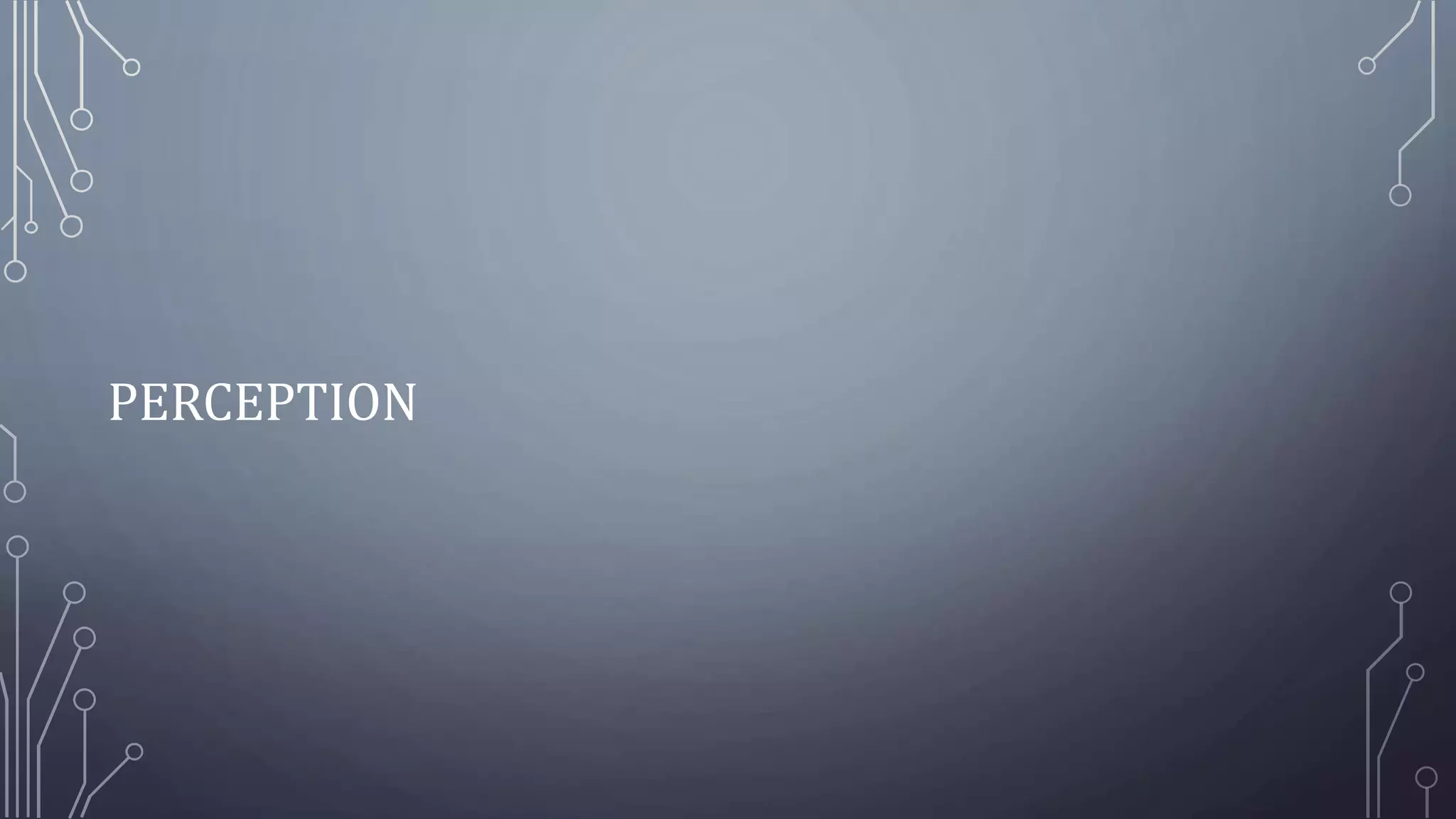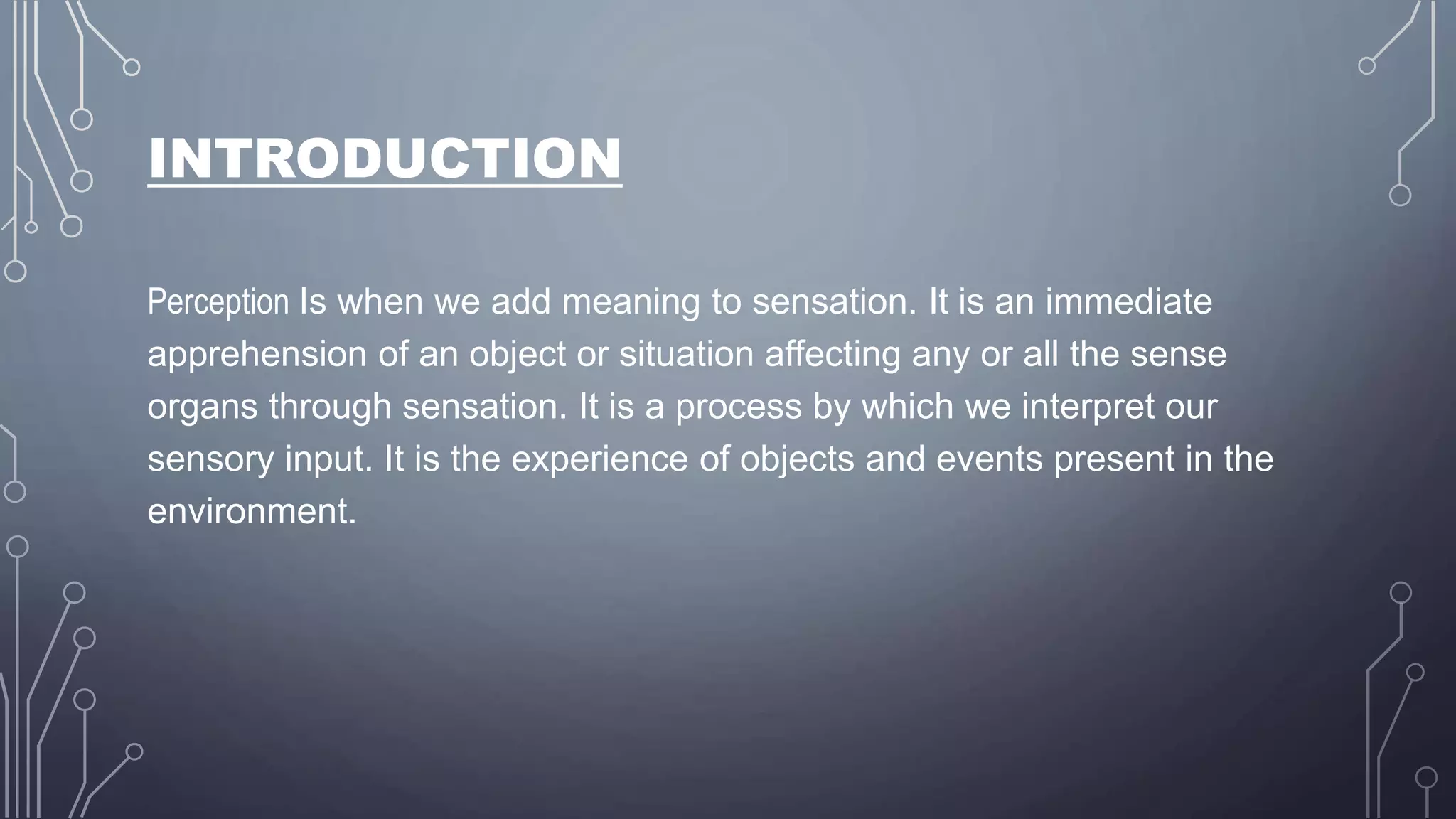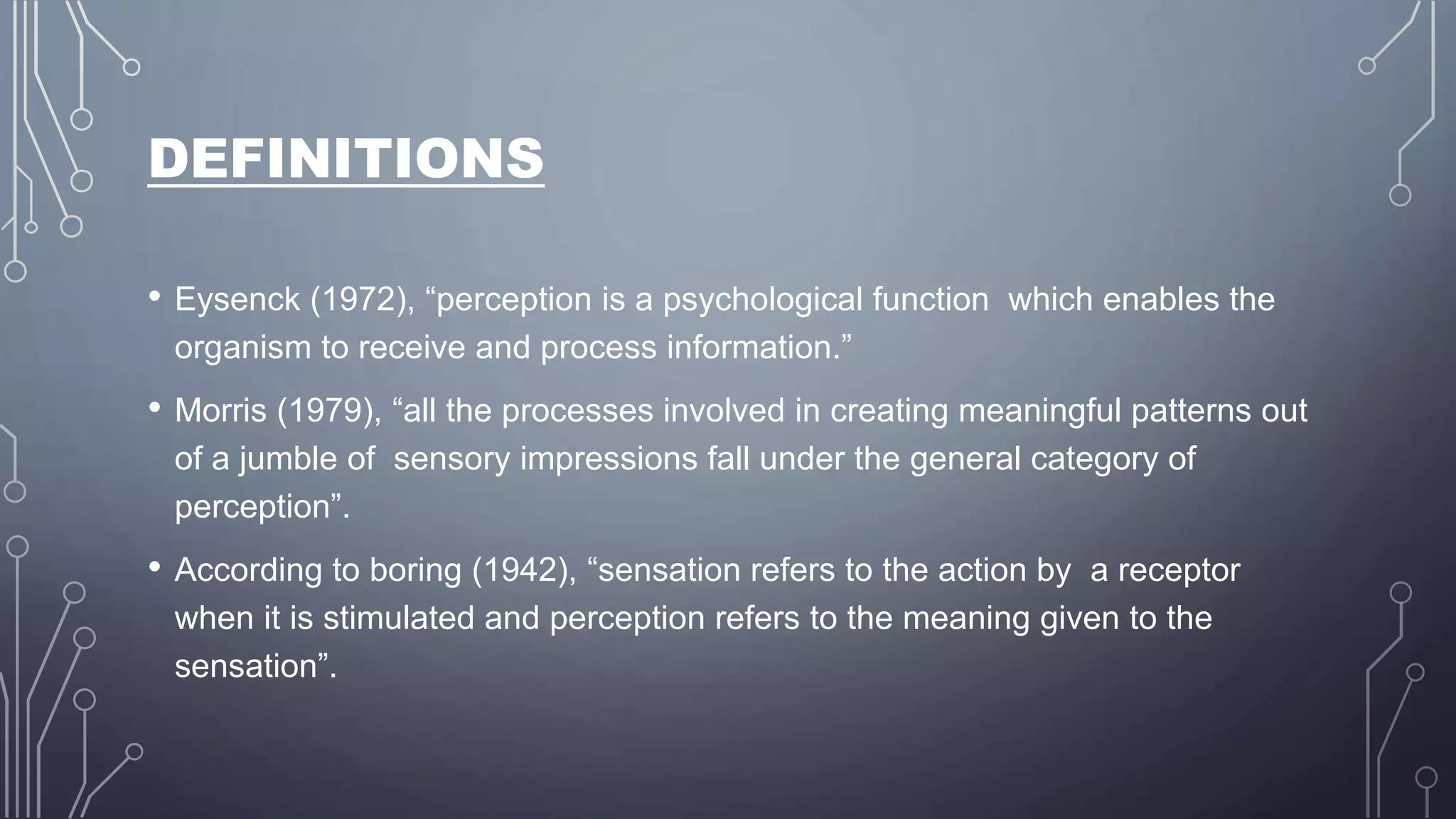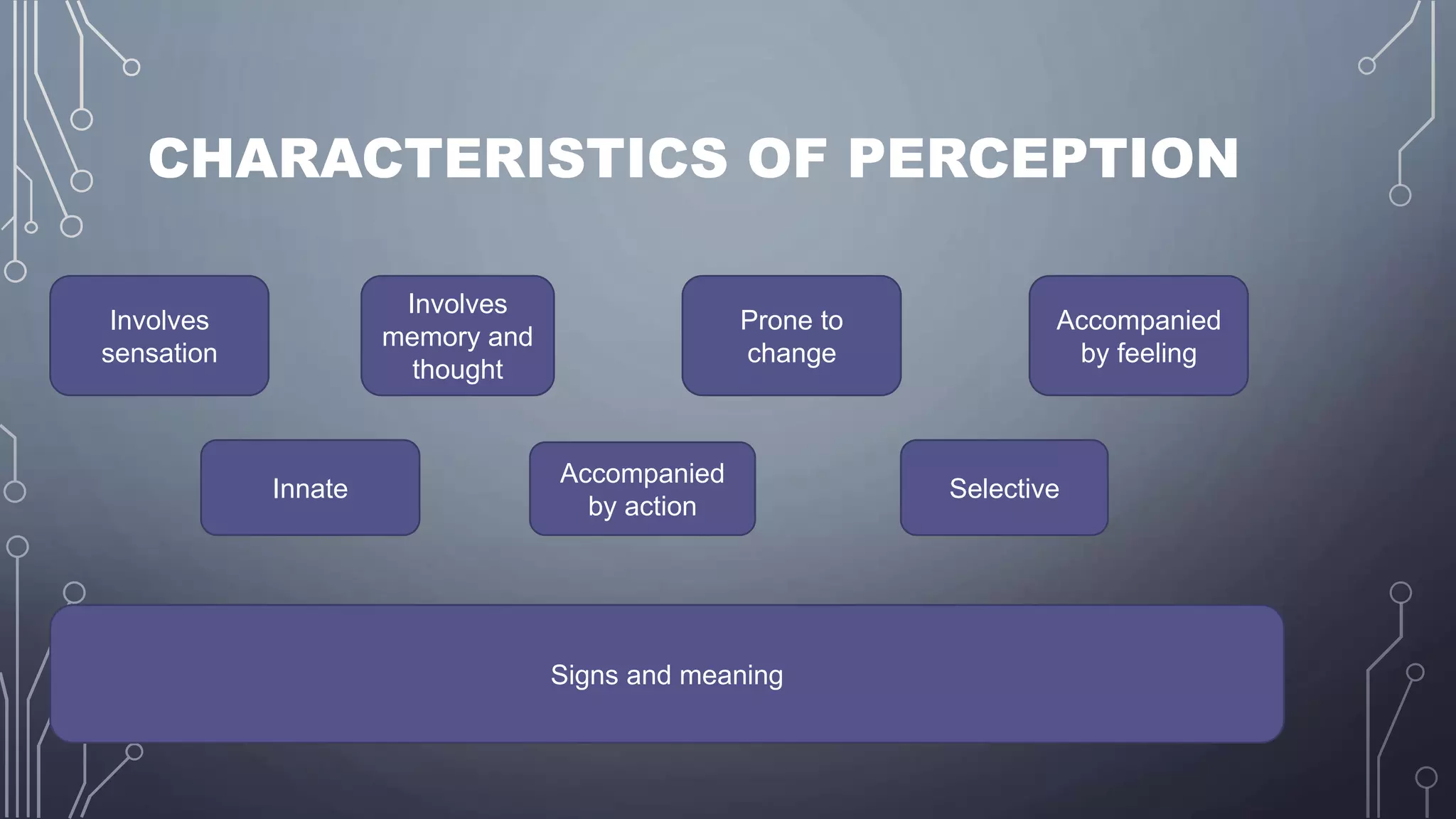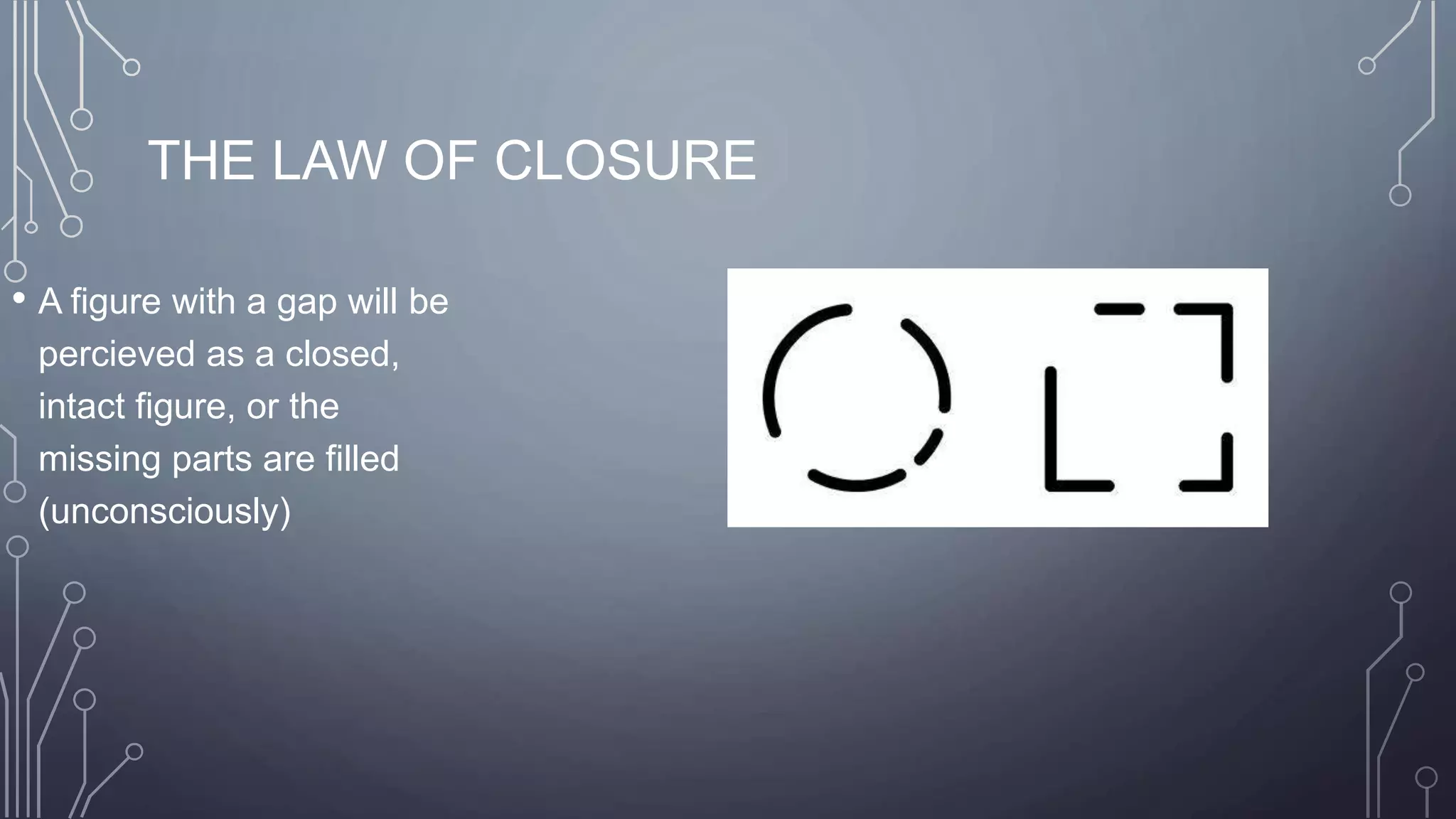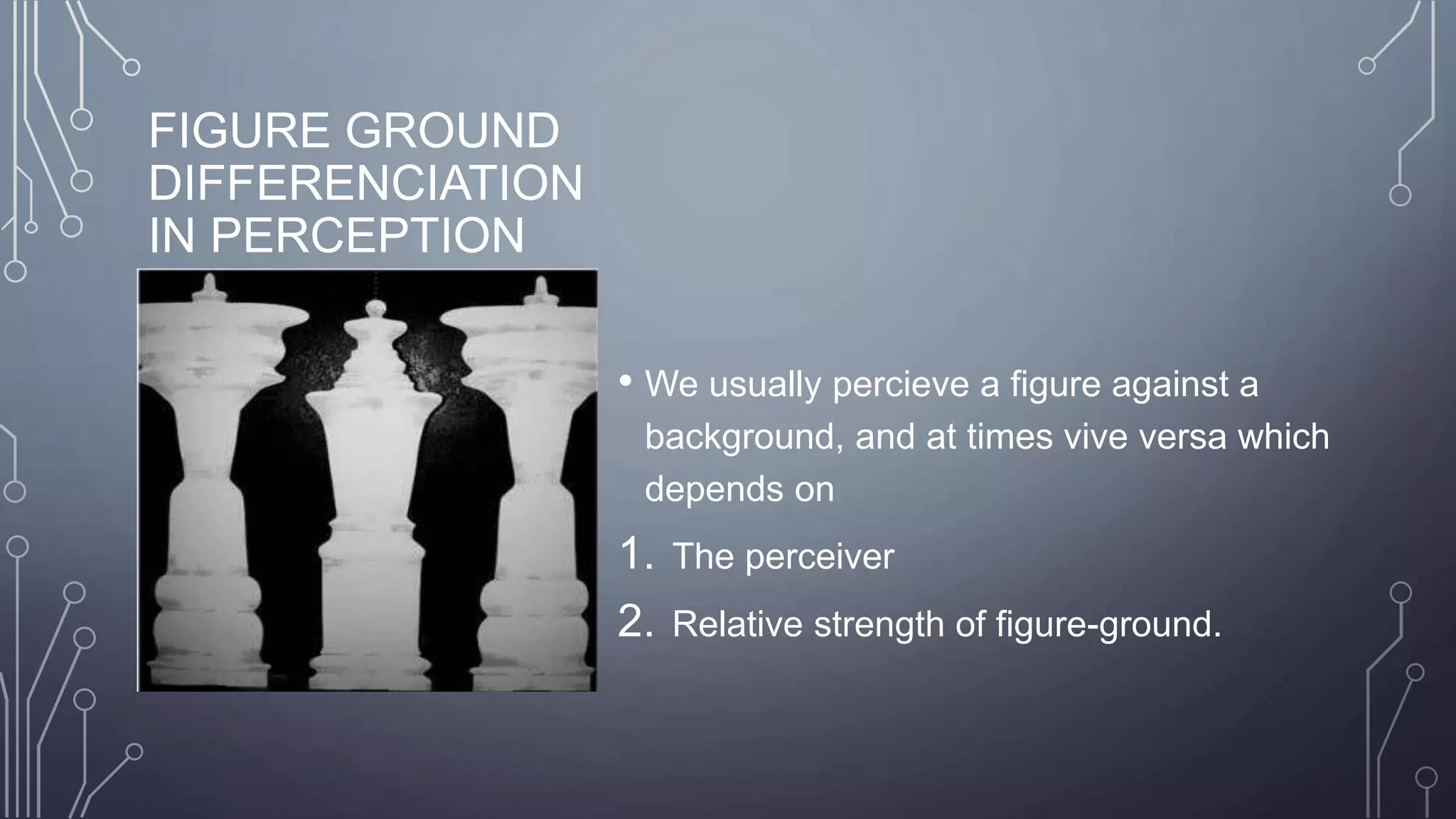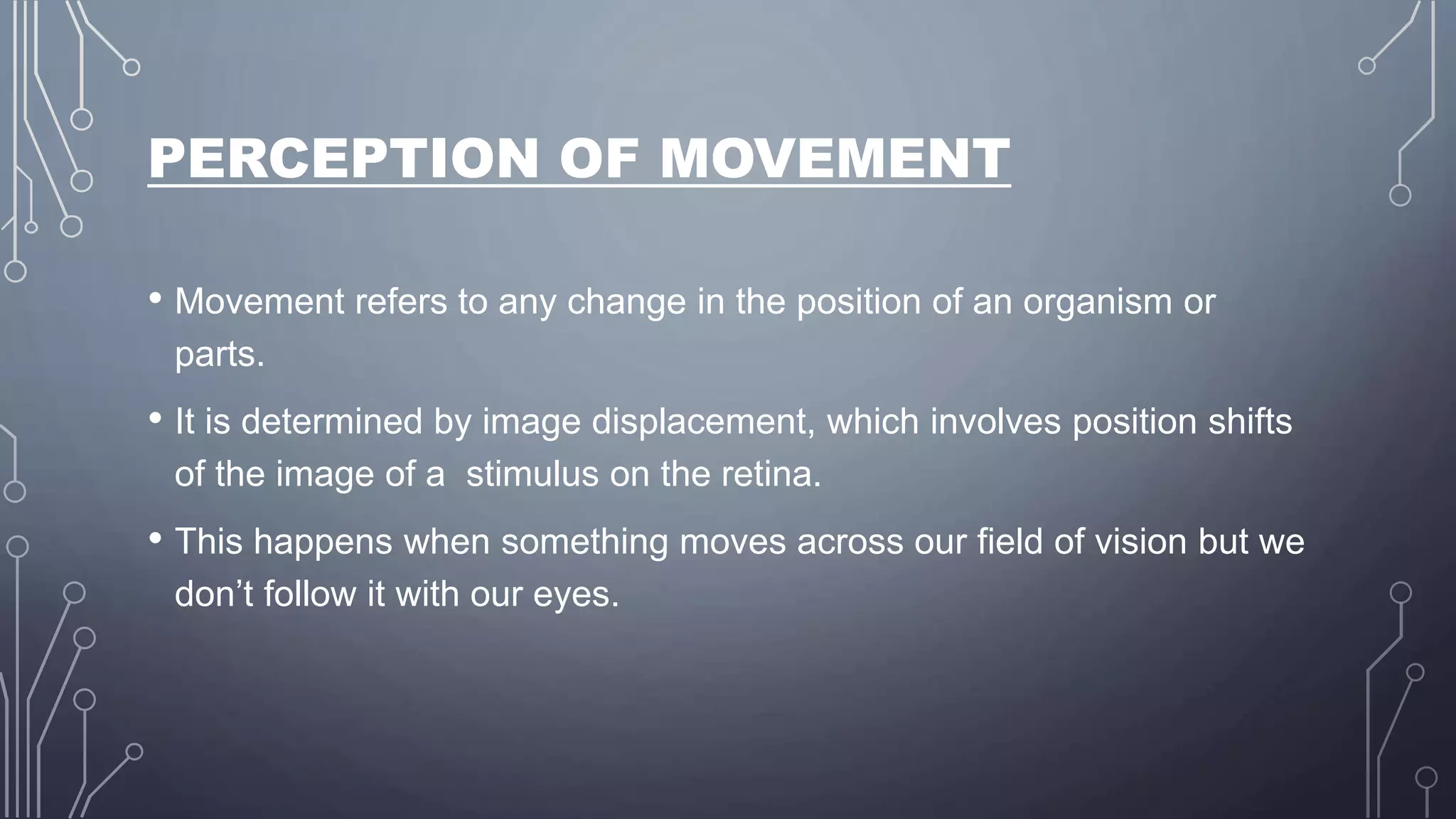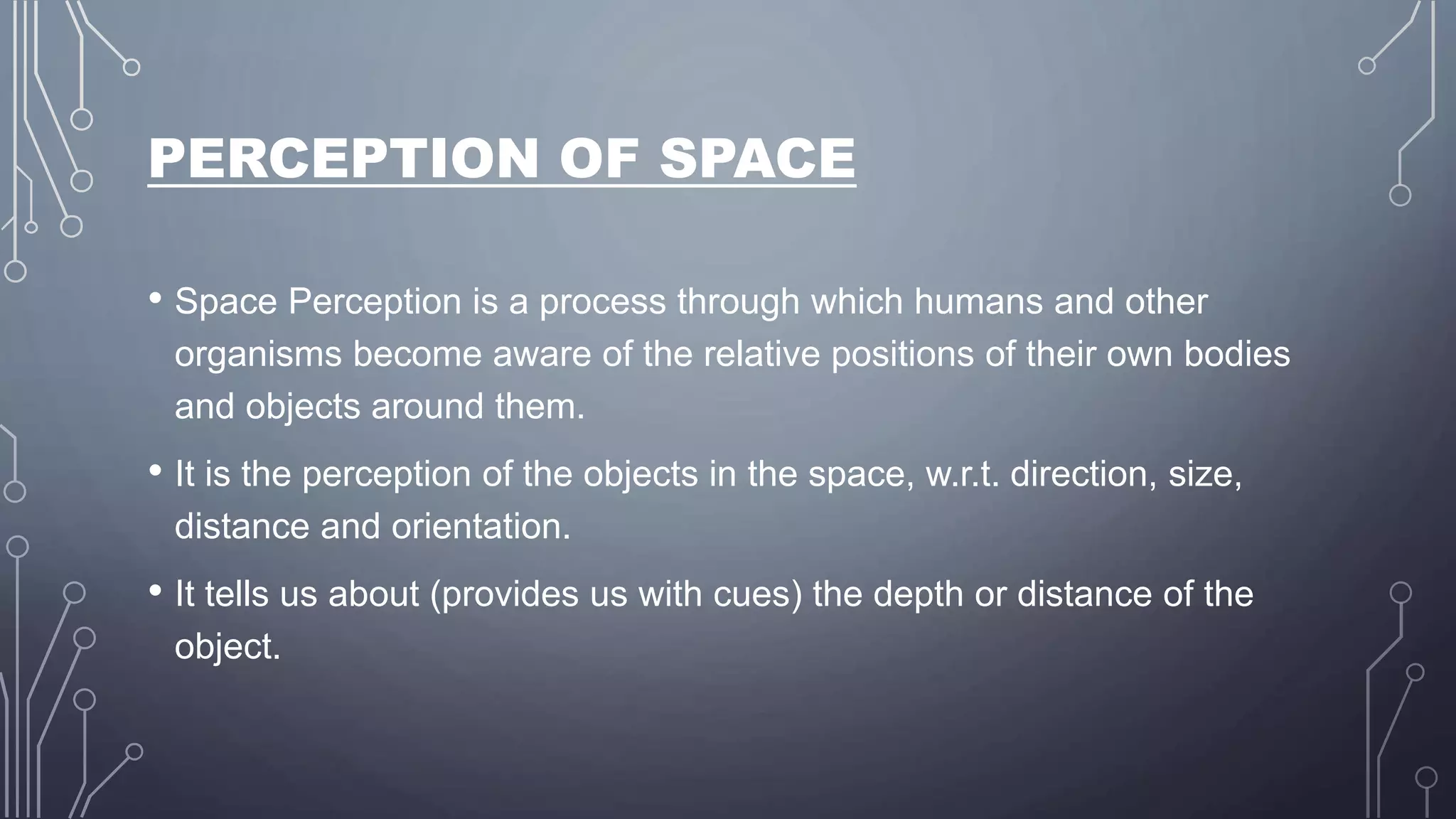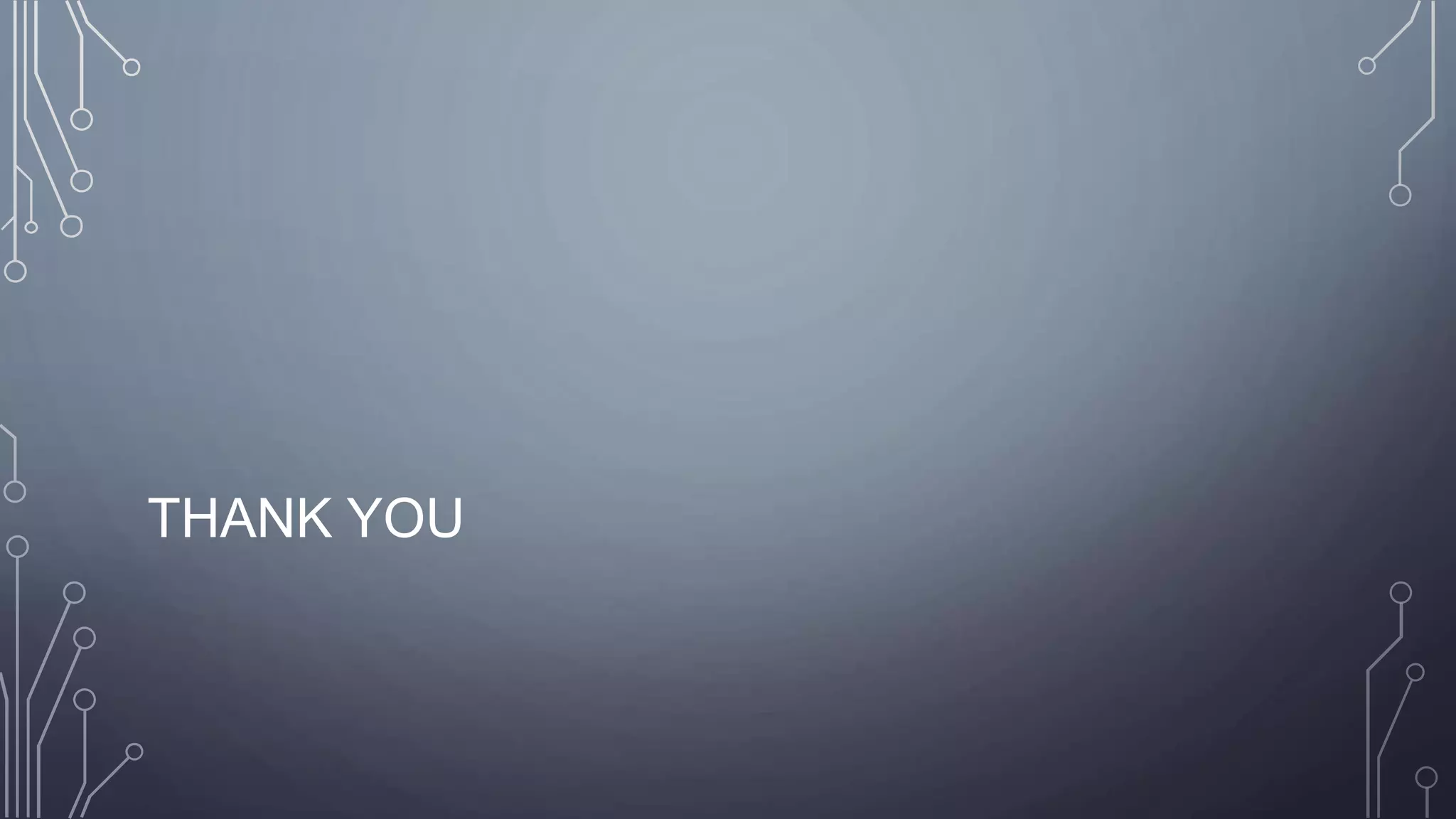This document discusses perception and defines it as the process of interpreting sensory input and giving meaning to sensations. It provides definitions of perception from various scholars and lists some key characteristics, including that perception involves sensation, memory, thought, and feelings. The document then discusses selective perception and the laws of gestalt organization, including proximity, similarity, closure, and common fate. It also covers perception of form, movement, space, and distance cues.
